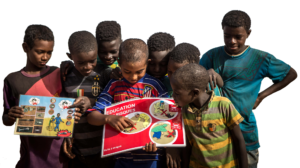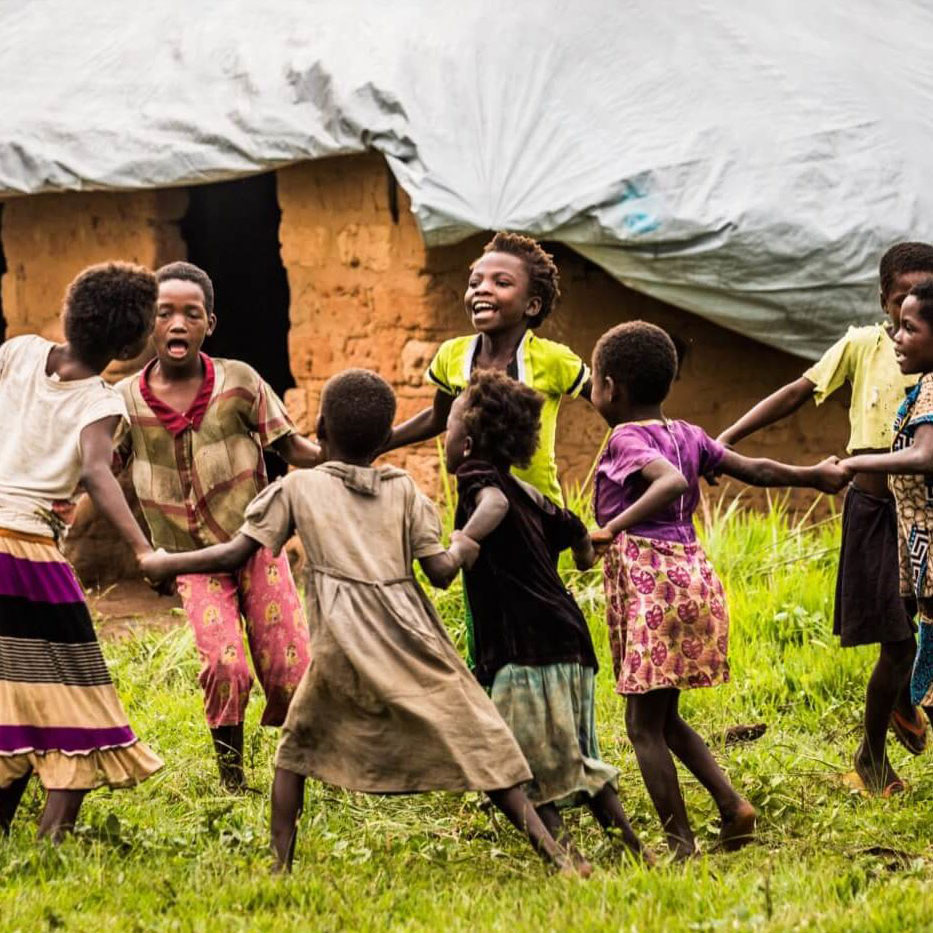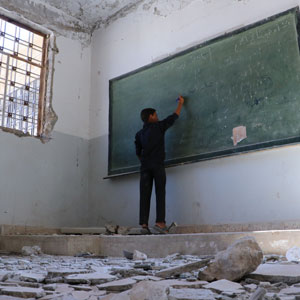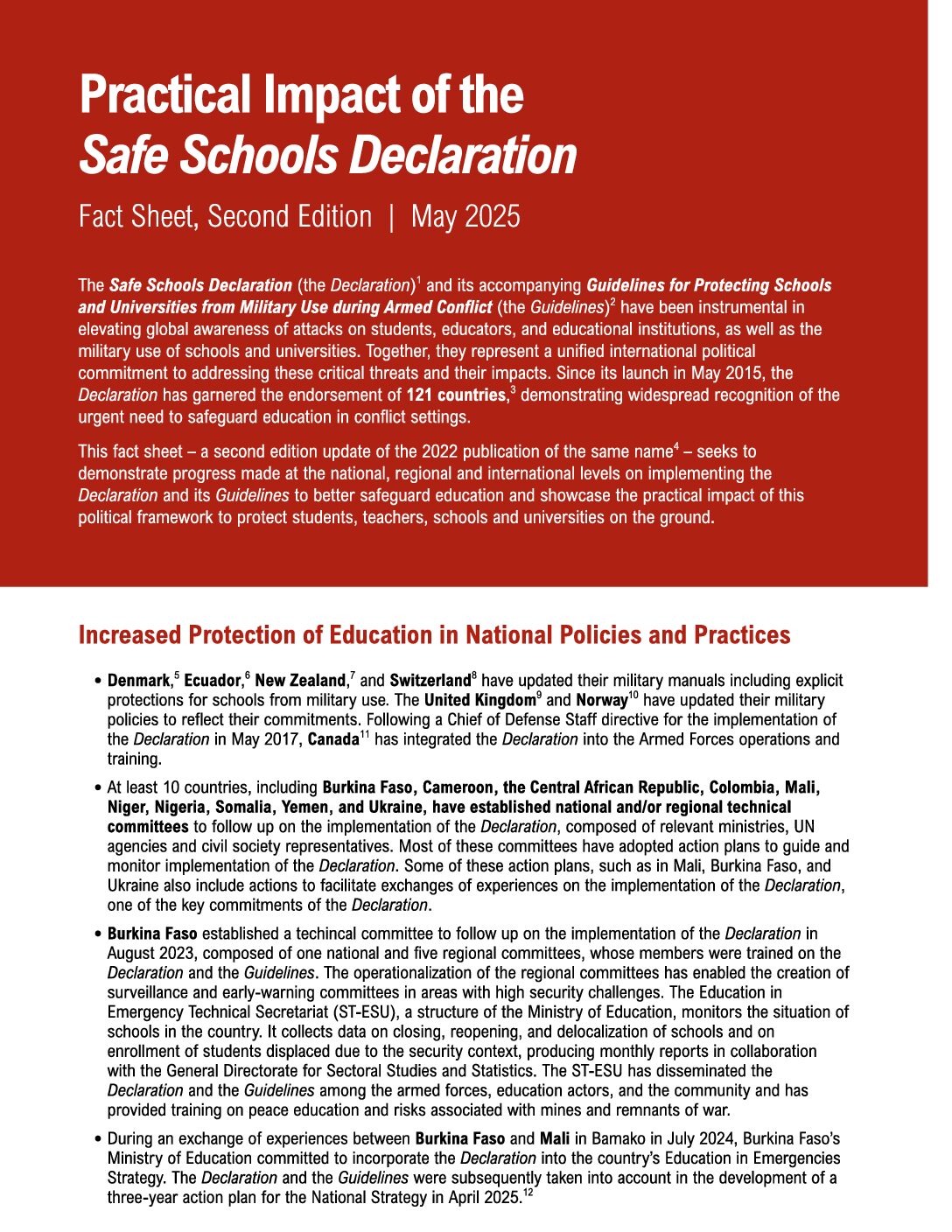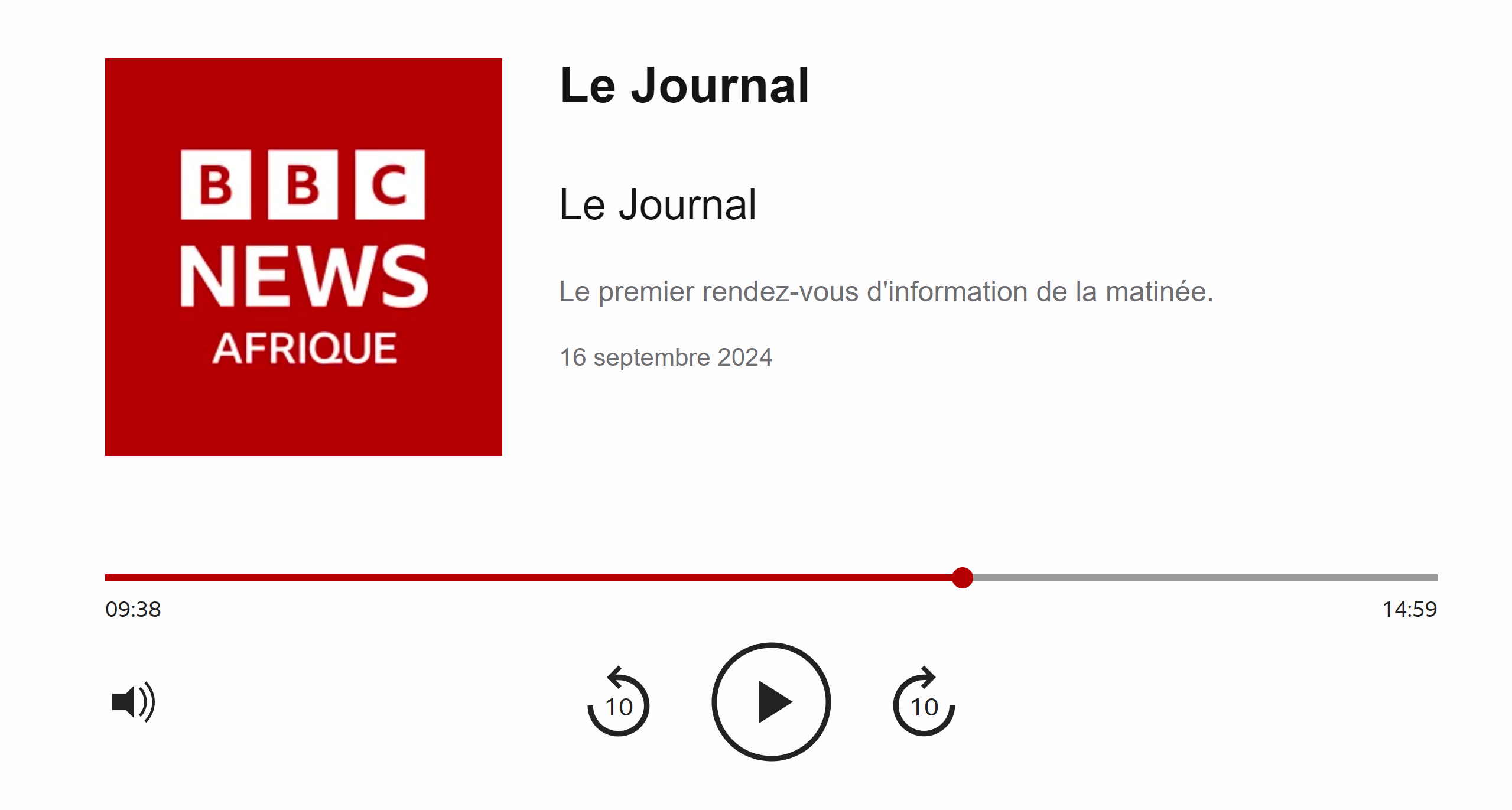GCPEA News
Attacks on Schools Threaten Children’s Future; States Must Act
Huffington Post, December 15, 2014
Children need to be protected, nurtured and allowed to reach their potential. We all instinctively know this because our own children are the most important part of our lives.
Salam is 12 — a boy growing up in Syria. The war there has been fought now for almost four years — a third of his young life. He has a strong opinion about education.
“One day armed men came and took control of our village. Two weeks afterwards our village started to be bombed day and night. My school was hit by one of these bombs that destroyed the walls, and then people stole all of the equipment and computers. When this happened I felt so sad, especially as most of my school friends fled and I felt alone.”
Nine-year-old Nagham was getting best grades in her class, but that is now only a faint memory.
“I left my school because it had been destroyed, and even our house has been destroyed and all our possessions have been stolen,” she said. “My old school was so beautiful, and there was a lovely garden where I used to play with my friends during the break times.”
Salam and Nagham may only be at the beginning of their young lives but they know instinctively how important education is. We all do.
Schools are not only attacked. They are used by fighters from all sides. The UN Secretary General’s Report on Children in Armed Conflict in Syria refers to them being used as bases, as detention centers and as positions for snipers. They have also been the scene of atrocities, including the summary execution of teachers — witnessed by children.
In numerous Syrian cities, schools are used by fighters. Saleh Jemel primary school in Aleppo is, for example, used as a military barracks and firing post.The school and the surrounding area are frequently shelled by opposing forces. According to the UN, 25 percent of schools in Syria have been damaged, destroyed or occupied by displaced people.
UNICEF estimates that almost three million school-age children are unable to attend school because of the war. We have no idea how long the conflict will continue or how many more schools will close — or how many children will have their lives destroyed as a result.
What is certain is that the threat to education — to the children and those who teach them — is a profoundly disturbing feature of all conflict today. I recently visited Liberia with Véronique Aubert, Senior Conflict and Humanitarian Adviser at Save the Children. Its civil war ended 10 years ago. Ninety percent of its schools were affected during its war — and they have still not recovered. More than merely a generation has been affected.
The bleak probability in Syria is that the war there will continue, more and more schools will be destroyed and more and more children will be deprived of the opportunity to learn. This will have a severe long-term impact on that country’s ability to recover. It is likely to be a damaged society for decades to come.
Protecting education is an imperative. It provides a broken society with the potential to recover. The sad reality is that wars will continue to be fought somewhere in the world. But the children who are war’s innocent victims must be protected and their schools must be safe havens. To reduce the longer-term impact on societies, we must do all we can to protect the education that will ensure there are people capable of working to heal and repair. In Liberia today, the fight against Ebola is hampered by shortages of trained medical staff, a consequence of the destruction of Liberia’s education system over 10 years ago.
Where will Syria be in 10 years’ time? What will the Salams and Naghams be able to do to rebuild their country? They will be young adults then — the ones who will have to put the pieces back together. To be blunt, the prospects are bleak … very bleak indeed. We must act to protect children and their schools and bring those who attack them to account.
Save the Children works with other agencies in Syria to reduce the impact of war on education: no easy task. Its recent report on Syrian education, “Futures Under Threat,” tells us that in the 12 months leading up to July 2014 there were a dozen attacks on or near the nine schools it directly supports. Three were so severely damaged they had to be rebuilt. Even when schools remain open, children are too terrified to attend and parents too worried to send them. Schools have become one of the most dangerous places for children to be. In the first nine months of 2014 alone, over 100 children were killed.
Save the Children is part of the Global Coalition to Protect Education from Attack (GCPEA). The Coalition, of civil society organizations and UN agencies, has produced Guidelines for Protecting Schools and Universities from Military Use during Armed Conflict. When applied, they should reduce the military use of schools as well as the likelihood of their being attacked
At the UN in Geneva this week, a meeting of states will finalize the content of those Guidelines. It is very good news. Many states are supporting this initiative. Crucially, so too are a number of Armed Non-State Actors; some are already using them.
When fighters use or attack schools, they deny children their rights to be protected and to be taught in safety. Education is crucial if we are to save a generation of war-affected children. To this end, states must endorse the Guidelines and ensure they are implemented during conflict. Those attacking schools and using them for military purposes must be held accountable. Only then will the Salams and Naghams get to see their own children grow in a peaceful and properly functioning society.
